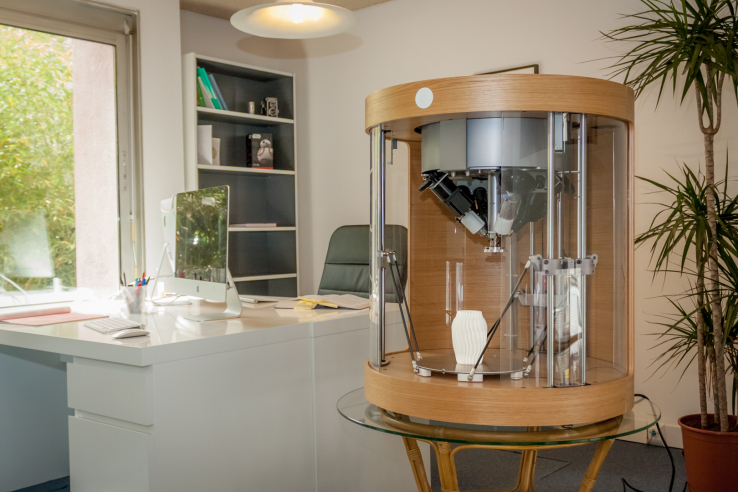Pam by Pollen is a Sleek Take on Desktop 3D Printing

With its professional appearance, Pam looks at home in modern office spaces. Courtesy of Pollen.
Latest News
July 5, 2016
Melting and extruding plastic to create 3D prints is not new. You could probably build a reasonably sized tower out of all the filament-based 3D printers that have been manufactured. It isn’t a particularly exciting process and has known limitations. Pollen might be able to teach an old dog new tricks. Pam is an upcoming plastic extrusion system from the French company and, unremarkable name withstanding, it is has a shiny professional exterior to go along with some new takes on functionality that may enable it to carve out a niche for itself.
 With its professional appearance, Pam looks at home in modern office spaces. Courtesy of Pollen.
With its professional appearance, Pam looks at home in modern office spaces. Courtesy of Pollen.Let’s get the worst out of the way first. Pam will cost €8,000 (about $8,900 at current Brexit rates) for its introductory run. That price is forecasted to jump up to €16,000 ($17,800) when the system goes into full production mode in 2017. Considering you can get a Form2 for less than half that price, it’s worth wondering what Pam can do that makes it so valuable.
For technical stats, Pam offers a 30 x 30 cm (11.8 x 11.8 in.) build envelope, accuracy up to 40 microns and a print speed of up to 400 mm/s. Print control and software are handled by the cloud, meaning you can print from anywhere you can get a connection. Those would all be pretty solid features for a fused filament fabrication 3D printer, so we’re off to a good start. But Pam uses specially formulated pellets instead of filament.
The major selling point for Pam is its material options. According to the company, Pollen’s forthcoming system is capable of printing up to four materials simultaneously. It can also mix and match materials, allowing for multi-material printing. Pollen even offers the option of ordering specific mixes of custom materials and colors.
In short, Pam is a professional 3D printer that asks you pay for what you receive. Whether customers are willing to do so is yet to be seen. Below you’ll find the intro video for Pam.
Source: Pollen
Subscribe to our FREE magazine, FREE email newsletters or both!
Latest News
About the Author
John NewmanJohn Newman is a Digital Engineering contributor who focuses on 3D printing. Contact him via [email protected] and read his posts on Rapid Ready Technology.
Follow DE





